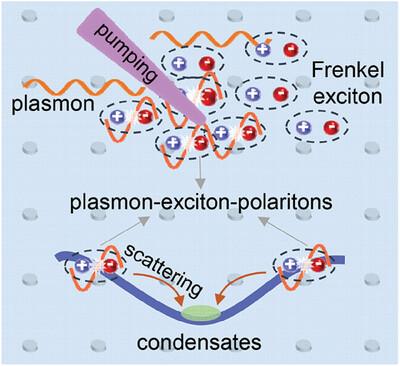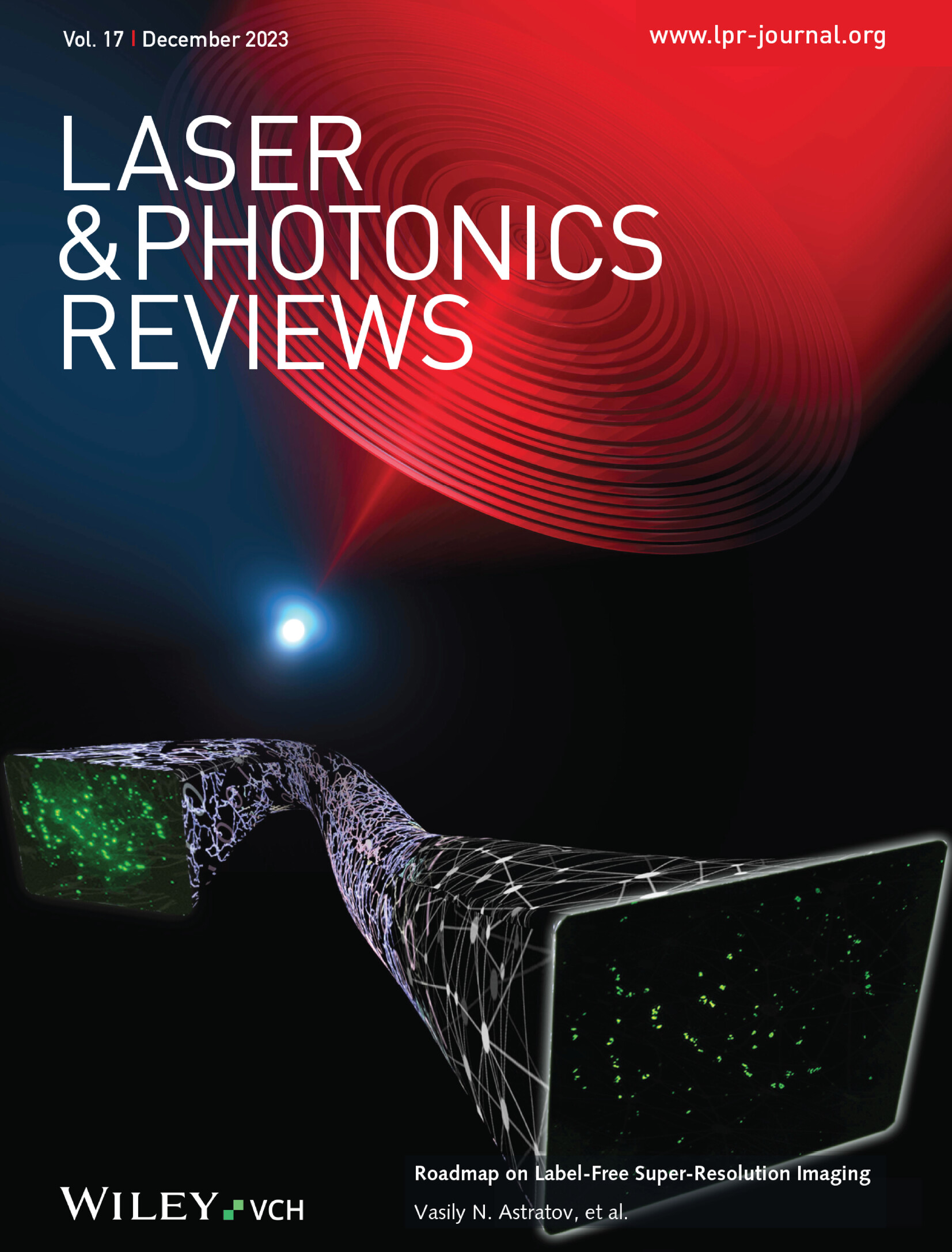Plasmon–Exciton–Polariton Condensation in Organic Semiconductor-Covered Plasmonic Lattices
IF 9.8
1区 物理与天体物理
Q1 OPTICS
引用次数: 0
Abstract
Exciton–polariton condensates featuring collective coherence and large nonlinearities are promising for advancing coherent light sources and functional devices. Nevertheless, their reliance on planar cavities with large lateral device footprints and mode volumes hinders device integration. Plasmon–exciton–polaritons (PEPs), arising from the strong coupling between excitons and plasmons, provide an intriguing platform to explore emergent polariton condensation at the nanoscale due to their ultrasmall mode volumes in metal nanoparticles. However, the substantial radiative and Ohmic losses in metals hamper PEPs condensation, particularly in the short wavelength range (<600 nm). Here, a method is proposed to address metal losses by integrating organic semiconductor neat films onto plasmonic lattices. The use of organic semiconductors with large transition dipole moment and low non-radiation loss enables efficient coupling between massive excitons and lattice plasmons, leading to high-density PEPs. This ensures a macroscopic number of polaritons populating the low-lying band edge at relatively low fluences to obtain bosonic stimulation, resulting in PEP condensation. By tailoring the band structures of plasmonic lattices, the condensation of PEPs are further manipulated into different energy states. These findings offer valuable insights for the design of PEP systems and all-optical polaritonic devices.

有机半导体覆盖的等离子晶格中的等离子-放电子-极化子凝聚
具有集体相干性和大非线性特征的激子-极化子凝聚态有望推动相干光源和功能器件的发展。然而,它们对具有较大横向器件足迹和模式体积的平面腔体的依赖阻碍了器件的集成。质子-激子-极化子(PEPs)产生于激子和质子之间的强耦合,由于其在金属纳米粒子中的超小模式体积,为探索纳米尺度的新兴极化子凝聚提供了一个有趣的平台。然而,金属中大量的辐射损耗和欧姆损耗阻碍了极化子的凝聚,尤其是在短波长范围内(600 纳米)。在此,我们提出了一种通过在等离子晶格上集成有机半导体整洁薄膜来解决金属损耗问题的方法。使用具有大过渡偶极矩和低非辐射损耗的有机半导体可实现大质量激子与晶格质子之间的高效耦合,从而产生高密度的 PEPs。这确保了在相对较低的通量下就有大量的极化子填充低洼带边,从而获得玻色子刺激,导致 PEP 凝聚。通过调整质子晶格的能带结构,PEP 的凝聚可进一步被操纵为不同的能态。这些发现为设计 PEP 系统和全光偏振器件提供了宝贵的见解。
本文章由计算机程序翻译,如有差异,请以英文原文为准。
求助全文
约1分钟内获得全文
求助全文
来源期刊
CiteScore
14.20
自引率
5.50%
发文量
314
审稿时长
2 months
期刊介绍:
Laser & Photonics Reviews is a reputable journal that publishes high-quality Reviews, original Research Articles, and Perspectives in the field of photonics and optics. It covers both theoretical and experimental aspects, including recent groundbreaking research, specific advancements, and innovative applications.
As evidence of its impact and recognition, Laser & Photonics Reviews boasts a remarkable 2022 Impact Factor of 11.0, according to the Journal Citation Reports from Clarivate Analytics (2023). Moreover, it holds impressive rankings in the InCites Journal Citation Reports: in 2021, it was ranked 6th out of 101 in the field of Optics, 15th out of 161 in Applied Physics, and 12th out of 69 in Condensed Matter Physics.
The journal uses the ISSN numbers 1863-8880 for print and 1863-8899 for online publications.

 求助内容:
求助内容: 应助结果提醒方式:
应助结果提醒方式:


